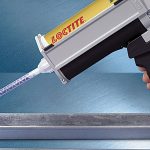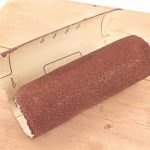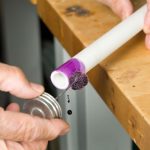Are you looking for an effective way to glue aluminum to fiberglass? Have you been struggling to find a reliable and secure method of bonding these two materials together? If so, then this blog post is for you!
In this comprehensive guide, we’ll walk you through the steps of how to glue aluminum to fiberglass. We’ll cover everything from choosing the right adhesive and cleaning the surfaces properly, to applying the adhesive and allowing it to set. By following our instructions, you’ll be able to create a strong bond between aluminum and fiberglass that will last for years.
So if you want your projects to look professional and stay secure, read on! With our tips and tricks, you’ll soon be gluing aluminum to fiberglass like a pro.
Let’s get started.
What is Aluminum and Fiberglass?
Contents
- 1 What is Aluminum and Fiberglass?
- 2 Can You Glue Aluminum to Fiberglass?
- 3 What Type of Glue Should You Use for Gluing Aluminum to Fiberglass?
- 4 Preparing the Aluminum and Fiberglass for Gluing
- 5 Applying the Glue to the Aluminum and Fiberglass
- 6 Curing the Glued Aluminum and Fiberglass
- 7 Troubleshooting Common Issues When Gluing Aluminum to Fiberglass
- 8 Tips for Successfully Gluing Aluminum to Fiberglass
- 9 Conclusion
Are you in need of strong and reliable materials for your construction project? Look no further than aluminum and fiberglass!
Aluminum is a lightweight, corrosion-resistant metal that can be shaped into various forms. It’s strong and durable, making it perfect for a variety of applications. Plus, it’s easy to work with, so you won’t have any trouble getting the job done.
Fiberglass is another great choice for construction projects.
This lightweight material is made from glass fibers woven together and set in resin. It’s durable, flexible, and resistant to heat – making it ideal for insulation purposes too.
And if you’re looking to build something that will be used on the water, fiberglass is an excellent option due to its strength and durability.
So if you’re looking for strong and dependable materials for your next construction project, consider aluminum and fiberglass! They’ll help ensure your project is built to last!
Can You Glue Aluminum to Fiberglass?
Are you looking for a way to glue aluminum to fiberglass? It’s possible! With the right adhesive, you can create a strong and durable bond.
Start by getting a two-part epoxy adhesive. Then, prepare both surfaces by cleaning them with acetone and sanding them smooth. Make sure they are dry before applying the adhesive.
When you’re ready, apply the adhesive evenly on both surfaces and press them together firmly for a few seconds. Finally, allow the glue to cure for 24 hours before using the glued parts.
What Type of Glue Should You Use for Gluing Aluminum to Fiberglass?
Are you looking for a way to bond aluminum to fiberglass? It’s easier than you think! The type of glue you use depends on the type of bonding you need. For permanent bonds, epoxy is your best bet.
It creates a strong bond that won’t break down over time. For temporary bonds, acrylics and polyurethanes are better suited as they can be easily removed without damaging either material.
When selecting a glue, make sure it is compatible with both aluminum and fiberglass materials. Read the instructions on the adhesive label carefully before use and always follow safety precautions when using any type of glue.
Bonding aluminum to fiberglass doesn’t have to be hard. With the right glue and proper safety measures, you can create strong and lasting bonds that will last for years!
Preparing the Aluminum and Fiberglass for Gluing
Creating a strong bond between aluminum and fiberglass can be tricky, but with the right preparation, you can ensure a successful result. Here’s what you need to do:
- Start by cleaning the surfaces with a damp cloth or paper towel to remove dirt, dust, grease, and other debris.
- Sand the surfaces to create a rough texture that will help the glue stick better.
- If using an epoxy, mix it according to the instructions on the package before applying it to the surfaces.
- Use an abrasive pad to remove any oxidation or corrosion on the aluminum.
- Make sure both surfaces are dry before applying glue.
By following these steps you can create a strong and lasting bond between aluminum and fiberglass.
Applying the Glue to the Aluminum and Fiberglass
Are you looking for a reliable way to bond aluminum and fiberglass? Look no further! With the right glue and a few simple steps, you can easily join these two materials together.
Start by making sure both surfaces are clean and dry before applying the glue. Then, use a brush or foam applicator to spread an even layer of glue onto both surfaces. Let it sit for 10 minutes before pressing them together firmly.
Once they are pressed together, let them cure in a warm place away from direct sunlight for 24 hours. This will ensure that the bond between the aluminum and fiberglass is strong and secure.
Gluing aluminum and fiberglass is easy when you have the right materials and instructions.
Curing the Glued Aluminum and Fiberglass
Gluing can be a tricky process, but curing the glue is essential for a successful project. The curing time will depend on the type of glue used, with most requiring 24 hours to fully cure.
It’s important to follow the instructions on the packaging for proper curing times and temperatures – usually between 65°F and 85°F. Make sure there is good ventilation around the glued area, too. Once cured, test it by applying pressure to ensure it has set properly before using it.
Troubleshooting Common Issues When Gluing Aluminum to Fiberglass
Glue can be an effective way to join these two materials, but it’s important to use the right glue and follow proper preparation techniques. Here are seven tips for creating a strong bond between aluminum and fiberglass with glue.
First, pick the right type of glue. Different glues can create uneven bonds, so make sure you’re using one designed specifically for bonding aluminum and fiberglass.
Second, prepare the surfaces properly. Clean them, remove any dirt or dust, and make sure they are dry before applying the glue.
Third, give the glue enough time to cure before putting any stress on the joint. If you don’t let it cure properly, the bond won’t be as strong as it should be.
Fourth, use just enough glue but not too much. Too much or too little can lead to a weak bond.
Fifth, remember that temperature and humidity levels can affect your bond strength over time.
Sixth, keep both surfaces free from contamination with dirt or other substances that could weaken your joint.
Finally, use clamps or other fastening methods to keep the surfaces together while curing – this will help ensure a strong bond.
Tips for Successfully Gluing Aluminum to Fiberglass
Start by making sure the surfaces are clean and free of debris. Use a brush to remove dirt, dust, and other residues. For rust, grease, or corrosion, use sandpaper or steel wool.
Then, roughen up the aluminum surface with a file or sandpaper for better adhesion.
Apply glue to both surfaces and press them together firmly for at least one minute. Clamp the pieces together for several hours or overnight if possible. When the glue has cured completely, your joint is ready to use.
Conclusion
Gluing aluminum to fiberglass can be a tricky process, but with the right glue and preparation techniques, it is possible.
To ensure a strong bond between the two materials, start by cleaning both surfaces with acetone and sanding them smooth.
Then, apply an even layer of epoxy adhesive to both surfaces and press them together firmly for several seconds.
Finally, let the adhesive cure for 24 hours before putting any stress on the joint. With these steps in mind, you can create a strong and lasting bond between aluminum and fiberglass like a pro.






